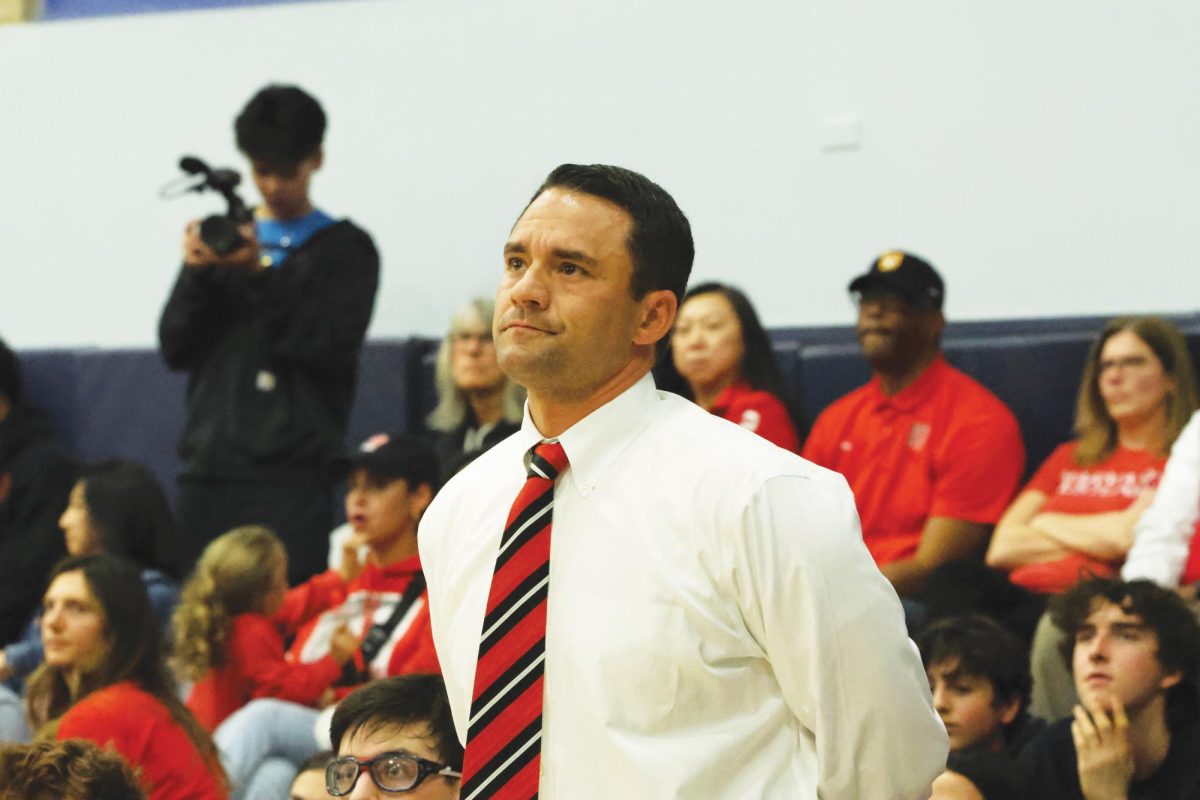
When visual arts teacher Claire Cochran ’06 was a senior, her art portfolio was her ticket to college, she said. Even though her GPA may not have been high enough for her to gain admission to a highly competitive school like Tufts University, Cochran said she believes she was accepted to its School of the Museum of Fine Arts dual-degree program because her portfolio was so strong.
Cochran was just one of many students who used an art portfolio to their advantage in their applications, she said. Students enrolled in Advanced Placement Studio Art: 2D Design and Advanced Placement Studio Art: Drawing work on a series of thematically and visually connected pieces during their senior year, which then become the portfolio that they submit to colleges during the application process.
Upper School Dean Jamie Chan believes that having a strong art portfolio as part of an application can greatly boost students’ chances of acceptance.
“I think it depends on the school that the art student is applying to,” Chan said. “If they are applying to a portfolio-based program, then the portfolio is going to need to be strong and competitive. For example, [at New York University], portfolio-based programs, [have] become test-optional. However, [NYU] will still need to see good grades [and] good activities, things like that.”
Busy Schedule
The schedule for most AP art students—a new piece every two weeks—can often mean long hours working in the art rooms in Feldman-Horn, leaving little time for them to participate in other extracurriculars, Cochran said. Cochran estimates that students who are planning to apply to art schools spend at least 10 to 15 hours every week working on their pieces, in order to define a concentration for their portfolios.
“Five days a week, I have art class for 45 minutes, and then sometimes, I stay after school a few times a week for a couple of hours,” Lola Butan ’21 said. “My only extracurricular is really art so that I don’t have to balance it with anything, which is nice.”
Application Process
As a senior going through the college application process, Sophia Nuñez ’20 said that her art portfolio will add personal elements to her applications.
“Art portfolios are a great way of showing a skill that isn’t necessarily quantifiable but also demonstrates time, effort, commitment and creativity,” Nuñez said. “Of course there are definitely things that colleges are looking for, but [portfolios] are a great way to show a different form of self-expression to schools.”
Nuñez said that for many, having a strong art portfolio is just as valuable as an athletic recruitment designation or a high GPA during the admissions process.
Underestimating the Portfolio
However, art student Echo Seireeni ’21 said she feels that non-art students or parents in the school community do not widely acknowledge or understand the value of the art portfolio.
“We’re always told that if you’re really good at sports, you might get recruited,” Seireeni said. “But you never hear ‘if you’re really good at art, you might get recruited,’ and that needs to change. There’s this traditional way of getting accepted that our parents know and that their parents know, and that’s by being really smart and being at the top of your class. But the average intelligence and grades in students have risen so much, and that’s not enough anymore. We’re all stuck back in the mindset that, you need straight A’s, you need an SAT [score of] 1600 in order to get into college. And that’s just not true anymore.”
In fact, art students have used the lesser-known route of an art portfolio to supplement lower grades in the admissions process for years, Cochran said. Cochran said that once those with portfolios are accepted into highly competitive schools, they then have the option to double-major across different departments. While some students continue to spend their time in the visual art world, others end up pursing other non-art related paths in college and their future careers.
“It’s always been this secret, almost ‘back-door’ into some schools—similar to the way that athletic recruiting works,” Cochran said. “A student I know at a public school in the valley had, maybe, a 3.2 [GPA] and on her SAT got something around a 1200, and she got into UCLA, into a portfolio based program. From there, she was able to double major in business, and she couldn’t have gotten there without the art portfolio.”
The school’s attitude towards art
However,the power of the portfolio in the admissions process does not mean that all art students feel their craft is taken as seriously, Seireeini said.
Seireeni said that while the deans may be supportive in individual meetings, she does not believe art as a path to college is adequately presented in larger group settings, class meetings.
“One-on-one, they’re super supportive, but I still have a problem with the fact that it’s almost never mentioned to the great majority of people, so if you’re not already an ‘art kid,’ you might not have any way to understand that that’s an option for you,” Seireeni said. “For example in our class meetings, we’re quizzed on colleges [in a fun activity], but there were no art schools mentioned in the quiz. So I definitely think that it should be more advertised.”





































